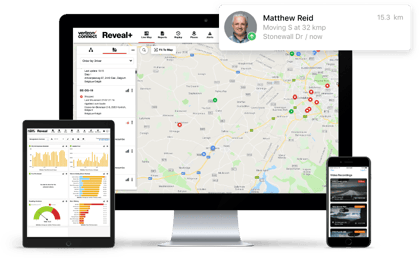9 Secrets to Reducing Fleet Expenses
As a fleet owner, your day-to-day costs can quickly add up. What you don’t know is there are further hidden, expensive...
Read more
Even the most skilled drivers have faced situations where they needed to slam on the brakes to avoid an accident. In moments like these, a vehicle's wheels can lock up, causing it to lose traction, skid or even spin out of control, making it difficult for the driver to steer safely.
An anti-lock braking system, also called “anti-skid braking systems,” anti-lock brakes” or ABS, addresses this challenge. The system plays a critical role in helping drivers avoid crashes or reduce their damage potential.
A meta-analysis of research studies shows “that ABS gives a relatively small, but statistically significant reduction in the number of crashes, when all levels of severity and types of crashes are taken together” (1). However, “while injury crashes decrease (-5%), fatal crashes increase (+6%)” (2).
This article will explore how ABS works, its different types and how it can improve fleet safety.
Since 2004, ABS is a requirement and since 2016 it’s now mandatory on all new scooters, motorcycles, tricycles (3). Anti-lock braking systems are designed to help drivers maintain control when braking in emergencies. By rapidly “pumping” the brakes, the ABS keeps the wheels from locking up and allows the driver to steer to safety while stopping. Additionally, ABS has been shown to reduce stopping distance for vehicles traveling in normal conditions.
ABS relies on a system of sensors, pumps, valves and controllers that monitor and adjust brake pressure to prevent wheel lock-up:
Working together, this system creates the quick pumping effect that prevents lock-up and allows steering during emergency braking.
Not all ABS systems are the same. While four-wheel ABS is common in passenger vehicles, other types are better suited to specific vehicle categories:
For fleet managers, ABS is an essential feature that can help prevent accidents and reduce maintenance costs by minimising the risks associated with emergency braking. There are several ways ABS contributes to fleet safety and efficiency:
While ABS does impact safety, it’s not a fail-safe method of crash prevention. In fact, under certain road conditions like gravel or snow, studies have shown that ABS can actually increase stopping times, according to research (5)
That’s why it’s still critical to train and coach drivers to follow safe driving behaviours, such as maintaining proper following distances of a minimum of three seconds between their vehicle and the one in front, following speed limits and driving cautiously when weather and road conditions are poor.
Fleet management technology can empower managers to educate drivers and implement safe driving behaviours through fact-based coaching. Dashcam video and telematics data can be used to personalise coaching sessions to sustain driver engagement and help reinforce safe driving habits.
By reducing skidding, preventing wheel lock-up, and allowing drivers to maintain control in emergencies, ABS helps to improve safety, reduce maintenance costs, and enhance fleet efficiency. To further promote fleet safety, consider using fleet management software to track ABS maintenance, monitor driver behaviour and stay on top of preventive maintenance.
For a closer look at how fleet management software can enhance your fleet’s safety and efficiency, consider booking a demo today.
Sources:
Tags: Safety




Find out how our platform gives you the visibility you need to get more done.
As a fleet owner, your day-to-day costs can quickly add up. What you don’t know is there are further hidden, expensive...
Read moreVerizon Connect Reveal tracks the fleet data that can have a big impact on your business. These are things like where...
Read moreReveal tracks the fleet data that can have a big impact on your business. These are things like where your vehicles are...
Read moreWork smarter from quote to completion with an end-to-end fleet management solution...
Read more